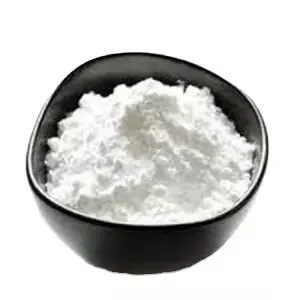Warning: Undefined array key "title" in /home/www/wwwroot/HTML/www.exportstart.com/wp-content/themes/1198/header.php on line 6
Warning: Undefined array key "file" in /home/www/wwwroot/HTML/www.exportstart.com/wp-content/themes/1198/header.php on line 7
Warning: Undefined array key "title" in /home/www/wwwroot/HTML/www.exportstart.com/wp-content/themes/1198/header.php on line 7
Warning: Undefined array key "title" in /home/www/wwwroot/HTML/www.exportstart.com/wp-content/themes/1198/header.php on line 7
- Afrikaans
- Albanian
- Amharic
- Arabic
- Armenian
- Azerbaijani
- Basque
- Belarusian
- Bengali
- Bosnian
- Bulgarian
- Catalan
- Cebuano
- China
- China (Taiwan)
- Corsican
- Croatian
- Czech
- Danish
- Dutch
- English
- Esperanto
- Estonian
- Finnish
- French
- Frisian
- Galician
- Georgian
- German
- Greek
- Gujarati
- Haitian Creole
- hausa
- hawaiian
- Hebrew
- Hindi
- Miao
- Hungarian
- Icelandic
- igbo
- Indonesian
- irish
- Italian
- Japanese
- Javanese
- Kannada
- kazakh
- Khmer
- Rwandese
- Korean
- Kurdish
- Kyrgyz
- Lao
- Latin
- Latvian
- Lithuanian
- Luxembourgish
- Macedonian
- Malgashi
- Malay
- Malayalam
- Maltese
- Maori
- Marathi
- Mongolian
- Myanmar
- Nepali
- Norwegian
- Norwegian
- Occitan
- Pashto
- Persian
- Polish
- Portuguese
- Punjabi
- Romanian
- Russian
- Samoan
- Scottish Gaelic
- Serbian
- Sesotho
- Shona
- Sindhi
- Sinhala
- Slovak
- Slovenian
- Somali
- Spanish
- Sundanese
- Swahili
- Swedish
- Tagalog
- Tajik
- Tamil
- Tatar
- Telugu
- Thai
- Turkish
- Turkmen
- Ukrainian
- Urdu
- Uighur
- Uzbek
- Vietnamese
- Welsh
- Bantu
- Yiddish
- Yoruba
- Zulu
ఆగ . 19, 2024 05:48 Back to list
Exploring the Benefits and Uses of Sodium Saccharin in Food Industry
Sodium Saccharin A Sweetener with a Controversial History
Sodium saccharin is one of the oldest artificial sweeteners, discovered in 1879 by chemist Constantine Fahlberg. Initially, it was identified accidentally when Fahlberg noticed the sweet taste of a compound on his hands after working in the lab. This discovery paved the way for sodium saccharin as a sugar substitute, particularly during times when natural sugars were scarce or expensive. Today, it remains a popular sweetening agent, especially in low-calorie and sugar-free products.
Sodium saccharin is a sodium salt of saccharin and is approximately 300 to 400 times sweeter than sucrose (table sugar). Its sweetness is often utilized in various food and beverage products, including diet sodas, sugar-free gums, and canned foods. It appeals to consumers looking to reduce their caloric intake without sacrificing flavor. The compound is particularly beneficial for individuals with diabetes or those watching their weight, as it does not raise blood sugar levels.
Despite its sweet allure, sodium saccharin has had a turbulent history, especially concerning health concerns. In the 1970s, studies linked saccharin consumption to bladder cancer in laboratory rats. This alarmed public health officials, leading to regulatory scrutiny. In 1977, the U.S. Food and Drug Administration (FDA) proposed a ban on saccharin, and users were required to carry warning labels on products containing it. However, further research and investigations revealed that the cancer risk was not applicable to humans, primarily because the mechanism observed in rats did not occur in human biology.
In the following years, scientific evidence continued to evolve, and saccharin was delisted in 2000 as a potential carcinogen by the National Toxicology Program. This reinstatement showcased a growing understanding of the compound's safety and reaffirmed its place in food and beverage formulations. Today, regulatory agencies like the FDA and the European Food Safety Authority consider sodium saccharin safe for consumption within established daily intake limits.
sodium saccharin

The continuing use of sodium saccharin also highlights broader discussions surrounding artificial sweeteners and their role in public health. For many consumers, the allure of reducing caloric intake and managing blood sugar levels is paramount. Still, others question the long-term health implications of consuming synthetic additives, fostering a debate that encourages research and consumer education.
Importantly, sodium saccharin's unique properties distinguish it from other sweeteners. Unlike sugar, it does not ferment, making it an ideal candidate for baking and cooking where high temperatures apply. Additionally, it has a very long shelf life, is stable at varying pH levels, and can enhance the flavor of certain products while reducing bitterness. These characteristics make it invaluable in the food industry.
Furthermore, while sodium saccharin is often viewed as the precursor to modern artificial sweeteners, newer alternatives like aspartame, sucralose, and stevia have emerged, each with unique benefits and drawbacks. However, saccharin remains a cost-effective option for manufacturers, ensuring its relevance in the competitive landscape of food production.
In conclusion, sodium saccharin, with its rich history and complex narrative, continues to be an essential tool in the quest for sweetness without calories. As society becomes increasingly health-conscious, the role of such sweeteners will remain important, emphasizing the need for ongoing research and informed consumer choices. While sodium saccharin may not be everyone's choice, it represents a fascinating intersection of science, health, and the evolving landscape of dietary preferences.
Latest news
-
Certifications for Vegetarian and Xanthan Gum Vegetarian
NewsJun.17,2025
-
Sustainability Trends Reshaping the SLES N70 Market
NewsJun.17,2025
-
Propylene Glycol Use in Vaccines: Balancing Function and Perception
NewsJun.17,2025
-
Petroleum Jelly in Skincare: Balancing Benefits and Backlash
NewsJun.17,2025
-
Energy Price Volatility and Ripple Effect on Caprolactam Markets
NewsJun.17,2025
-
Spectroscopic Techniques for Adipic Acid Molecular Weight
NewsJun.17,2025

